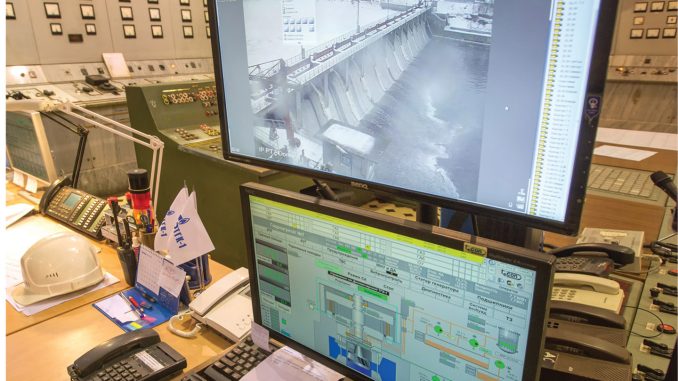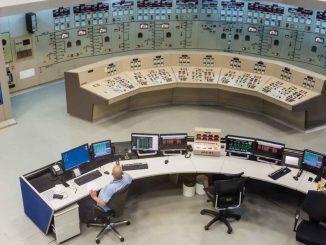
With the growing integration of renewable energy into the grid, hydropower is expected to play a major role in addressing the intermittency and balancing requirements. The International Hydropower Association (IHA) has recently recognised India as an emerging hydropower giant, as it overtook Japan to become the fifth largest hydropower producer in the world in 2020. If the assets of India’s hydroelectric projects (HEPs) are maintained well, significant benefits can be extracted from them over a longer period of time as
compared to other sources of energy. To this end, digitalisation of hydropower plants can play a significant role in maximising the value of the current assets and operating an ageing fleet in a rapidly changing energy scenario. Intelligent hydropower plants have the potential to offer benefits in several areas, including productivity, safety and costs, by reducing operations and maintenance (O&M) costs, improving data analysis and enhancing project management.
Digitalisation opportunities
Constant data collection and analysis in HEPs can help identify deviations in the parameters of the plants long before a fault occurs. Intelligent maintenance systems can learn the normal operating modes of the plants and thus detect deviations. This allows optimisation of maintenance by defining stop times well in advance. This is an exponential evolution of predictive maintenance, since the working of the whole plant is analysed in real time rather than just a few parameters measured in isolation in each equipment.
As more and better data is fed into the system, the model will become increasingly accurate in detecting deviations and faults. Digital controllers can increase the efficiency of HEPs with more accurate measurement of input and output parameters such as flow, pressure and power. Intelligent control systems help achieve more precise adjustments in regulators. As the operation of existing HEPs becomes more varied due to hybrid technologies incorporating solar and wind energy, the plants will be required to operate at several points of their efficiency curve. Digitalisation will be more relevant in such scenarios.
Digital technologies also provide opportunities for better forecasting of generation, including generation from wind/ solar resources. Accordingly, hydropower plant operators can plan their short to mid-term scheduling, also considering the requirements for flexible generation, and can use digital tools to offer even greater real-time flexibility. This would mean increased system reliability for the system operator and increased revenues for the plant owner/operator from the flexibility markets.
Moreover, real-time monitoring and increased data analysis capabilities change the O&M pattern of plants from preventive to predictive, resulting in a considerable decrease in forced outages and extended maintenance intervals.
Key enabling technologies
Big data: Big data technology plays a major role in aggregating large volumes of data from multiple sources to facilitate the integration of other energy sources and market data into production planning. It also plays a role in managing the incoming data used in inflow forecasting tools. A cap is necessary to process the incoming data on inflow and forecasts in order to optimise production for maximum revenue. This can also be used for historical trend analyses to identify weather and market signatures that can be exploited in the future for production planning. According to an analysis done by Accenture, when implemented well, efficiency gains from asset analytics can increase revenue by 0.5-1 per cent, while decreasing maintenance capex by 2-5 per cent.
Digital twin: Digital twin technology enables the creation of virtual models of HEPs in real time through artificial intelligence (AI), mathematical models and the measurement of the operation parameters of the plant, including hydrology measurements upstream and downstream of the plant. A digital twin allows replication of the operations of the plant in a virtual world in which different modes of operation can be simulated. Being an intelligent model, it learns the behaviour of the plant through input data, and its accuracy improves over time as it is fed more data and measurements. Additionally, one of the key issues with HEPs is acceptability, given their potential environmental and social impact, which must be adequately identified and mitigated. Creating virtual models of HEPs before their construction could help identify these impacts through the technology of augmented reality.
AI and ML: AI and machine learning (ML) can utilise insights and trends identified through advanced analytics to shape O&M activities and aid their automation. AI and ML can enable predictive maintenance by learning failure modes and applying fault tree analysis, allowing for reduced regularity of asset health checks and early identification of risks. When paired with simulation, they can help optimise the management of capital and operations expenditure allocation.
IoT: The internet of things (IoT) facilitates real-time asset health monitoring, allowing for more granular insight into asset performance trends. IoT allows for collection of higher frequency time-series data and more accurate historical data analysis. Connected sensors, embedded in assets, are able to measure wear, vibration, tear, temperature, etc., to estimate the overall state of assets and offer real-time alerts, predictive analytics, automatic reporting and real-time visibility.
Unmanned vehicles and robots: Remote monitoring technologies such as drones and computer vision have the potential to revolutionise asset inspection. They reduce the need for personnel to assess equipment condition, particularly in remote locations or in cases of safety risks. Coupled with AI and ML, drones can even detect issues without the need for human supervision. In the construction phase, drones and diving robots with sensors and actuators can enable progress monitoring and high accuracy digital surface modelling.
Digital workforce management: Digital workforce management solutions assist O&M staff in routine work in terms of operation scheduling and documentation. Mobile digital solutions replace analogue machinery books by enabling staff to review and input maintenance data directly on site, which is automatically reported to centrally managed O&M platforms, decreasing the administrative workload and ensuring the clarity and efficiency of maintenance processes.
DCS: Another scalable automation solution is a distributed control system (DCS). A DCS enables plant operators to monitor, control and protect equipment while obtaining all the productivity possible from plant assets. It involves a network of instrumentation, comprising sensors, flow switches, transducers, etc., and provides real-time information to operators, allowing complete control of machines and auxiliaries from the control room (often located at a remote location). With a DCS, no manual intervention is required.
Advanced CFD capabilities: Computational fluid dynamics (CFD) is another powerful modelling tool that makes internal flow predictions for good accuracy. It detects flow problems-to-be and makes improvements in the geometry of turbine components. It is used for checking the efficacy of alternative turbine designs for optimisation before the final experimental testing of selected designs.
Challenges and the way forward
These digital applications obviously require investment, but every solution or tool has a different cost depending on the magnitude. Further, ageing hydropower plants approaching their end of life have limits on capex allowed for replacement and refurbishing.
Moreover, there are some infrastructural challenges in the digitalisation of HEPs, such as poor network connectivity between power stations and remote centres, commercial confidentiality (asset owners and operators potentially being unwilling to share information about individual power plants and network infrastructure), and lack of IT infrastructure with gencos.
Skill gaps are another challenge. The fast pace of technological improvements requires an improved level of IT knowledge and experience, not only for the design and implementation of digital technologies but also for operation of assets and organisations; and continuous improvement to keep up with the pace of digitalisation.
If these challenges are overcome and HEPs are encouraged to adopt emerging technologies and innovative approaches to improve their operational performance and cope with cybersecurity risks, the full potential of digitalisation can be realised.
In sum, the range of application of digital technologies in the hydropower sector is wide, going across the whole hydropower plant life cycle (planning and design, construction, and O&M to meet high-level objectives (safety, sustainability and commerce). However, going forward, key barriers will need to be overcome through measures ranging from creating a “digital culture” in power companies to new regulations that can promote modernisation by explicitly recognising the value of digital solutions.



